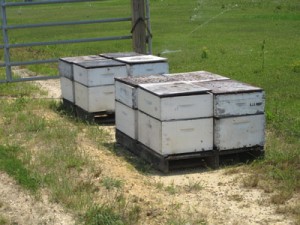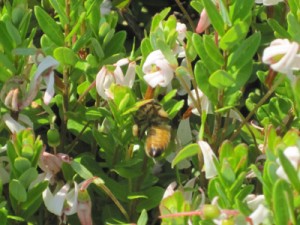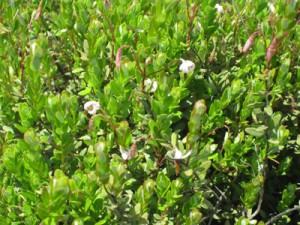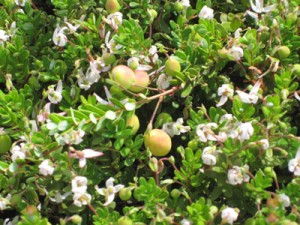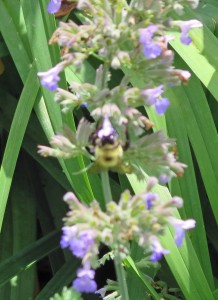A good fall harvest depends on a successful growing and pollination season, and cranberry growers, like many fruit growers, rely on honeybees and bumble bees to cross pollinate blossoms. Production and yield is directly tied to good pollination and subsequent fruit set. In addition, pollinators are important to native plants, which provide food and cover for numerous wildlife species, as well as helping stabilize the soil and improve water quality. One of the more important elements in the Pine Island Integrated Crop Management (PIICM) program is ensuring adequate pollination; flowers that are not visited by bees rarely produce fruit. To this end, we work with several New Jersey beekeepers to temporarily install hives during the bloom period, usually at the end of May/beginning of June depending on the weather.
“This year we have 980 acres in production,” says manager Mike Haines. “We try to bring in 2 colonies per acre, which means we have approximately 1,960 colonies total this year. We brought in the first bees around the first of the month; the Crimson Queen variety over at Oswego was the earliest bloom. Then a couple days ago we brought in the last of the bees for the Early Blacks at Caley and Red Road as well as the Early Blacks at Sim Place, three weeks after the first colonies came in. It’s been really interesting to see the variation in bloom time.” Timing is important; our team waits until a bog is at about 20 to 40% bloom so the bees have enough to immediately start pollinating.
This is important because cranberries are actually a lot of work for honeybees. On a cranberry plant, the anthers (the pollen-bearing part of the stamen) are shaped very differently from most other flowers, having an opening at the end of the anther, rather than splitting open to expose the pollen. This means getting the pollen out requires extra work by the pollinator. While some believe that honeybees are not as efficient at this task, single visits by pollen foraging honeybees can be enough to elicit fruit, especially in areas where weather during bloom is warm. “At the lake it’s almost time to take them out; there’s not a whole lot of flower left and the fruit is sizing up already,” Mike says. “For both our sake as well as the beekeepers, we want to get the colonies out when they’re done working. Without as much to feed on, it’s more stressful for them and they’ll also try to go elsewhere.”
Research has shown that honeybees are competent at pollinating cranberry flowers as long as the weather remains satisfactory, according to the USDA, and so far, even with the rains this week, they’ve been doing very well!

